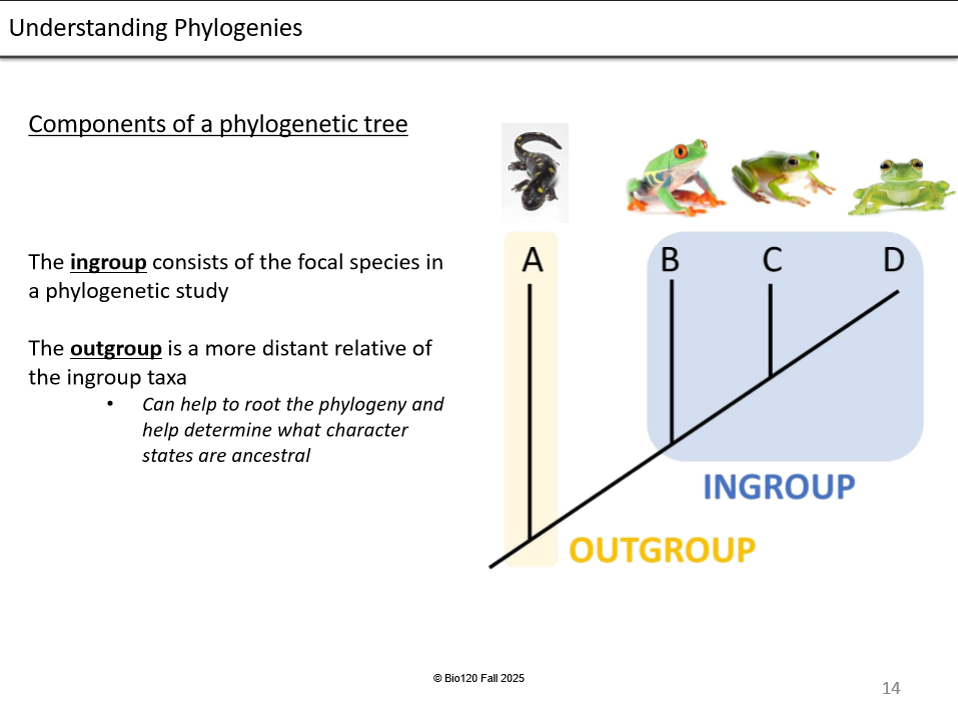Macroevolution - Lecture 10
1/28
There's no tags or description
Looks like no tags are added yet.
Name | Mastery | Learn | Test | Matching | Spaced |
|---|
No study sessions yet.
29 Terms
Taxonomy
classification and naming of organisms
What Is The Study Of Systematics
Study of biodiversity and evolutionary relationships between organisms (phylogenies)
Carolus ___________ is the father of taxonomy
Linnaeus
Scientists try to classify organisms by their _____________ history
Evolutionary
Taxon
One taxonomic unit of organisms
List the taxonomy hiearchy
Domain
Kingdom
Phylum
Class
Order
Family
Species
Dear
King
Philip
Came
Over
For
Good
Soup
What do nodes represent
An ancestral species at the moment they split into two new species
What do the branches represent?
An evolutionary (changing) lineage through time
The tips can represent 3 things, name them
Individuals
Species
Clades (group of organisms)
What is a sister group?
2 internal branches; descendants of one ancestral species
Parent branch Vs. daughter branch
parent = before the splitting node, daughter = after the node

What is the root & what does it represent?
A node representing the earliest time in the diagram
Ingroup Vs. Outgroup
Ingroup -
Most recent, closely related species
Outgroup -
Distant relative of the ingroup

Why are outgroups helpful to scientists?
They help determine traits that are closely linked to root ancestors
Most Recent Common Ancestor (MRCA)
most common ancestral node between a group of taxa

What is a clade?
Group of a phylogeny that includes a MRCA and all of it’s descendants
How to determine a clade
Number of clades = number of nodes
(each node can be a separate clade)
What is a Monophyly and how do you determine one?
A clade/group that includes an ancestor and its descendants
Determined by the scissor test
How to differ between clades and monophyly
You can’t, they are the same
Paraphyly
Group made of ancestor and some descendants
Polyphyly
A group that does not contain the MRCA of all members
Paraphyly Vs. Polyphyly Vs. Monophyly/clade
Paraphyly -
Ancestor + SOME descendants
Polyphyly -
Descendants - MRCA
Monophyly/clade -
Ancestors + ALL descendants
Derived Vs. Ancestral
Derived: if the clade rose within the clade, not present in ancestor
Ancestral: if the trait evolved in the clade, present in common ancestor
Synapomorphy
Shared derived trait for a clade
Homology
Structures dervied from a common ancestor
Homoplasy
Similar traits that don’t derive from a common ancestor
EX. human hands, gorilla hands, bear paws
Why Is Paleontology Important?
Direct record of past evolutionary change
Inference is strongest for groups in the past (fossilize well)
Phylogenetics
Indirect record of past evolutionary change
Inference is strongest for groups that have living representatives ( in the present)
Is paleontology and phylogenetics for macroeveolution or microevolution?
Macroevolution